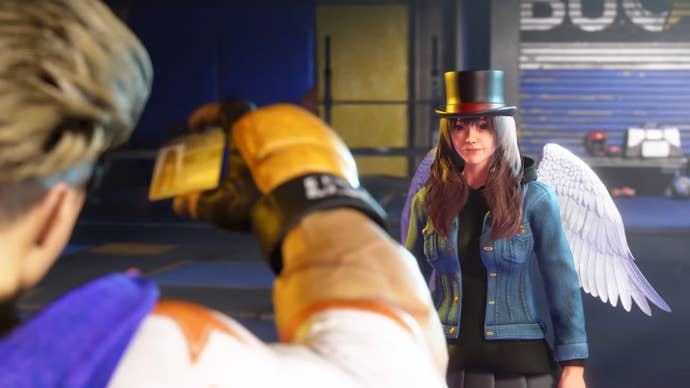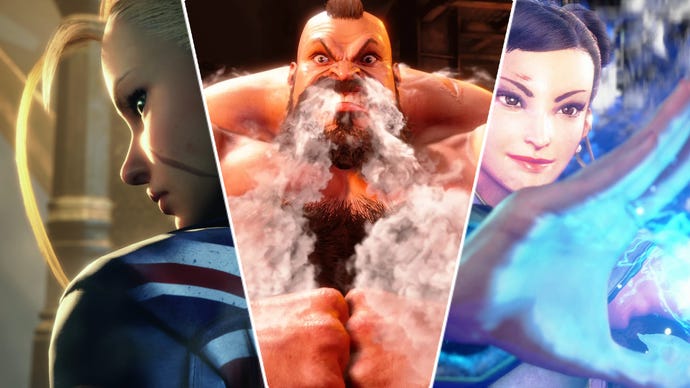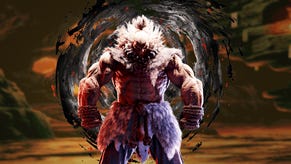Street Fighter 6 review: one of the best fighting game packages of all time
With Street Fighter 6, the series steps back into the ring, bruised and beaten, and proves nothing can keep its fighting spirit down.
In gaming, as in any art, you sometimes have to learn to take the rough with the smooth. No artist, director, studio, production house, or franchise is infallible. But the failures aren’t always just missteps. Sometimes, they’re stepping stones on the route to triumph.
This happens in all mediums, but I think we see more of it in games. This is the story of Final Fantasy 14 to A Realm Reborn, of the Wii U to the Switch – and of Street Fighter 5 to Street Fighter 6. A greatly troubled game at launch that took years to rescue, the fifth Street Fighter game now has its real legacy: training Capcom in what it needed to do to make a modern fighter that slaps harder than E. Honda – at launch.
Or to put it another way: Street Fighter 6 isn’t just the best package of content ever in the franchise’s history – it might be the best ever in the history of the genre.
This isn’t to say that Street Fighter 6 is a perfect package top-to-bottom. Some of the modes are better than others, and I reckon opinion among critics and gamers alike will run the gamut depending on exactly what you want from this game. For me, however, it’s a home run. It’s one of the best games of the year.
.jpg?width=690&quality=70&format=jpg&auto=webp)
To understand the overall package, one first needs to understand that SF6 is in many ways three games in one. The trio link to each other and have various content overlap, but it’s practically three separate games. This is underlined by how on all three platforms the main ‘game’ download is actually only for one of the three modes – but your system will then download the other two modes automatically as ‘DLC’.
It’s also demonstrated by the game’s main menu, which gives you three great big icons to choose from: Battle Hub, World Tour, and Fighting Ground. And it actually makes sense to similarly break up explanations of the contents of each.
Fighting Ground
.png?width=690&quality=70&format=jpg&auto=webp)
Think of Fighting Ground as Street Fighter 4 – which is to say, this mode features more or less all of the modes you found in SF4 and even SF5. 15 years ago, this would’ve been the whole game.
There’s Arcade Mode for each of the 18 launch characters, with each featuring a three-part illustrated and voice-acted story revealing where that character is at SF6’s point in the Street Fighter timeline. That means you’ve got lovely glimpses of the likes of Ryu and Chun-Li semi-retired, enjoying a Bison-free world - while others stumble across a new threat rising. The stories crossover and intersect in ways that hint at where the narrative is going.
Practice gives you various training options including returning features in Training Mode and Combo Trials. There are also deeper Tutorials than ever before, however, and in-depth Character Guides for every member of the cast that explains how their various moves are best utilized.
Versus allows you to fight locally one-on-one or in teams, while Special Match lets you fight battles with a range of whacky and special conditions for a party game feel. Finally, there’s Online, which lets you engage in Ranked or Casual matches, plus join Custom Lobbies, in a basic menu-led system.
Naturally, this mode hinges on how good the core fighting is. It’s excellent – but we’ll come back to that in detail later. But all you need to know for now is that, yes, this is a good package.
Battle Hub

Battle Hub is Street Fighter 6’s new vision for online. While you can connect to online matches in a more simple manner through Fighting Ground, this is more interesting: a full 3D space, MMO-style, where player-created avatars can hang out and sit down at virtual arcade machines to initiate casual matches.
As well as booting into matches featuring the same content as the versus elements of fighting ground, you can also whittle away the time in other ways. You can play classic Capcom games in a retro section (in the review period, Street Fighter 2, Puzzle Fighter, and Final Fight were available – but this game list will rotate). It’s also possible to have unranked one-on-one fights between player-created avatars, which are imported from World Tour. There’s public and private chat functionality, and even a big screen showing match highlights and promotional videos.
I love this idea. It’s difficult to tell exactly how good it’s going to be without fully populated servers – but as somebody who obsesses over the arcade feel and even owns a couple of arcade machines in the name of preservation, I adore that the purpose here is to evoke the feeling of arcade competition that helped Street Fighter to thrive in the 90s.
If you want to spectate a match, you literally walk your avatar up behind the arcade cabinet the two players are on and press a button to begin watching. While you go into full-screen game view, to others your avatar will crowd around the cabinet watching, bouncing in excitement at whatever is happening. It gives the Battle Hub an energy that I just love in concept - and what I saw in the beta suggests that’s going to carry through to the final release.
World Tour

This is probably the mode that is going to attract the most attention around release – and with good reason, as it’s pretty unique and interesting. World Tour is best described in a few different ways. It’s a Street Fighter RPG. It’s a spiritual successor to Final Fight (and other similar 2D beat-’em-ups). And it’s also got a lot in common with things like Yakuza and Shenmue.
Basically, you create a character and then head out into a mini open world representation of Metro City (the setting of Final Fight). Later, you’ll unlock another open world zone in a different country, plus a slate of smaller single-screen locations around the globe. In these zones, you’re in a glorious cheery version of the world where almost everybody on the streets is happy to have a fight if you trigger it. At night (you can switch between daytime and nighttime in the open zones) gangs take to the streets and make them slightly more perilous.
It’s not as in-depth as Yakuza, but the comparison does stand up in how you wander around and get into scraps. Another comparison point is arguably the story modes of the NBA 2K or even FIFA games, where you create a character and guide them into fame and fortune in sports, meeting real stars along the way. Here, the real stars are Street Fighter’s iconic fighters – who become master to your budding apprentice.
It’s a fairly intoxicating mix of fighter and RPG, honestly. The RPG element is that your character grows, with stats influenced by leveling up and gear that you equip. Gear can be upgraded to make it more potent, and consumable items can give you a boost for limited periods. Really, though, it’s about training; and you do that by getting out there and fighting in the streets. This is Street Fighter, after all.
The ‘masters’ aren’t very involved – you essentially train with them and then go off to have your own adventure, returning to them for further tutelage and advice. If you want to see Chun-Li, Ryu, and Guile facing off an evil threat again, that’s not what this is. This is your story, they’re just present to guide you along the way. My feelings on this are mixed. Ken has an exciting new twist in his narrative, for instance – framed for a crime he didn’t commit, he’s no longer a playboy millionaire, but a terrorism suspect. He hangs out on a building site in ragged old clothes. But this story doesn’t particularly advance or resolve.
A lot of it doesn’t really resolve, in fact. The main plot line, involving your created character and a hot young buck called Bosch, does come to an absolute end. But once all that is over you’re tossed back out into the world. There are side quests to complete, masters to train under – and with DLC fighters, World Tour will also expand. “This story doesn’t have a real ending,” Luke tells the player. And he’s right, in a sense: the search for mastery that Street Fighter is all about goes on forever. And presumably, the narrative around evil organizations and cryptic fighting tournaments will continue to unravel over however many years SF6 continues to be updated.
.jpg?width=690&quality=70&format=jpg&auto=webp)
What Ken and the others do offer is their skills, however. As you train with each master, they’ll teach you moves from their classic repertoire – and then you can build a character that’s a mix-and-match of skills from the entire cast. If you want to craft something truly dirty like Dhalsim’s Yoga Teleport into Cammy’s Cannon Strike dive kick, finishing off with a brutal grapple inherited from Zangief… you can. Go off. Make something mad, and broken. In World Tour, even with crazy builds your progress will be slightly limited by the RPG mechanics, however; damage dealt and taken is directly tied to stats that gradually grow over time.
At the core of World Tour is a really strong idea, though the execution is all over the place. There’s some rough RPG balancing, especially towards the end, where you’ll really be forced to grind it out. It looks visually worse than every other mode - in places feeling like a whole generational bump down. The scope is larger, so you can see where that’s coming from - but it’s just a bit weird.
World Tour is far from perfect - if anything, it feels like a strong first run at a campaign structure that is probably going to stick and become the future of this series. As it will for a few other fighters, too. It is greatly enjoyable, though. It’s meaty, too: when the credits rolled, I was Level 58 and had spent some 27 hours in the mode. I’ve since put in several more hours grinding out skills and outfits, since that stuff carries over to Battle Hub in a limited fashion.
World Tour is sort of a three-star mode in a five-star game. Its foibles and eccentricities don’t drag the rest of the package down, however – as, honestly, I think the rest of it is plenty compelling without it. World Tour is arguably just a lovely bonus, and a great training tool for beginners. Even the experienced will likely get some joy out of it, which speaks to the cleverness of most of its design.
Final Round

With all that considered, what do you have, then? Three modes, three paths, one game. Story, Online, Offline. They feel separate and discrete, and yet there’s just enough cross-over between the three that it all feels like one cohesive experience. Your World Tour character being your avatar for online interactions in Battle Hub is a brilliant touch, as is being able to casually fight with those characters in unranked fun-only battles.
Meanwhile, all the knowledge garnered across all three modes plays into making you a confident, competent player for actual competition. Even World Tour’s mini-games are cleverly reused as bonus stages in Fighting Ground’s Arcade Mode – which makes this one of the most content-filled Arcade Modes in Street Fighter history, as there’s more bonus stage variations that can appear than ever before. World Tour’s stage hazards crop up in Extreme Battles in both other modes. It’s all connected.
No part of the animal goes to waste, so to speak. Capcom’s team have acted as the most skilled butchers, ensuring that every part of this thing they’ve nurtured is useful in multiple ways. And it’s just brilliant.
All of this is helped along, of course, by the battle system. It’s difficult to talk about these mechanics at launch, as you need to wait for the dust to settle – but I’m also quite happy to declare that I reckon the ‘Drive’ system is at once one of the most accessible and one of the most deep game systems Capcom has offered in a Street Fighter game.
Its accessibility can be measured in comparing similar mechanics to past games. Drive Impact, for instance, is similar to Focus Attack from SF4. But the way it works and how easy it is to inherently understand is just smoother here. The same is true for parries when compared to SF3, and dash cancels, which are greatly simplified – until you need to use them in extremely complicated situations.
.png?width=690&quality=70&format=jpg&auto=webp)
Separating out the Super meter and the Drive meter is a masterstroke. Supers can be saved for big moments, comebacks, and topping off combos, while managing the other resource becomes paramount. I think you have to think more at all times in SF6 than other entries in the franchise, which is saying something.
By combining this system with perfectly serviceable and totally valid simplified controls for controller players (or just those not used to traditional fighter inputs), players are invited to feast on this mechanical banquet. The game’s thesis is simple: if you can perfect the timing for a charge motion, or the input for a 360 grapple shouldn’t be a barrier to engaging with the systems, and the systems are where Street Fighter gets its sublime depth.
What speaks volumes about Street Fighter 6, in a sense, is the length of this review. It’s long, and yet I barely feel like I have scratched the surface. World Tour is a slightly ropey debut for a really strong single-player format – but SF6 is ultimately more than the sum of its parts, and the core fighting system alone justifies a high score and a strong recommendation. The previous entry launched with potential, but was racked with problems. This is a worldie from minute one. It’s a must-have. And it might just be the most compelling overall fighting game package of all time.
Pros
- A sublime fighting system with a brilliant balance of accessibility and depth
- Varied content modes that should suit all types of player
Cons
- World Tour isn’t as polished or self-assured as the other modes
- Notable World Tour image quality issues on Xbox - but Capcom promises a day-one patch will fix them
Version Tested: PC, Xbox Series X/S. Copies of the game were provided by the publisher.










